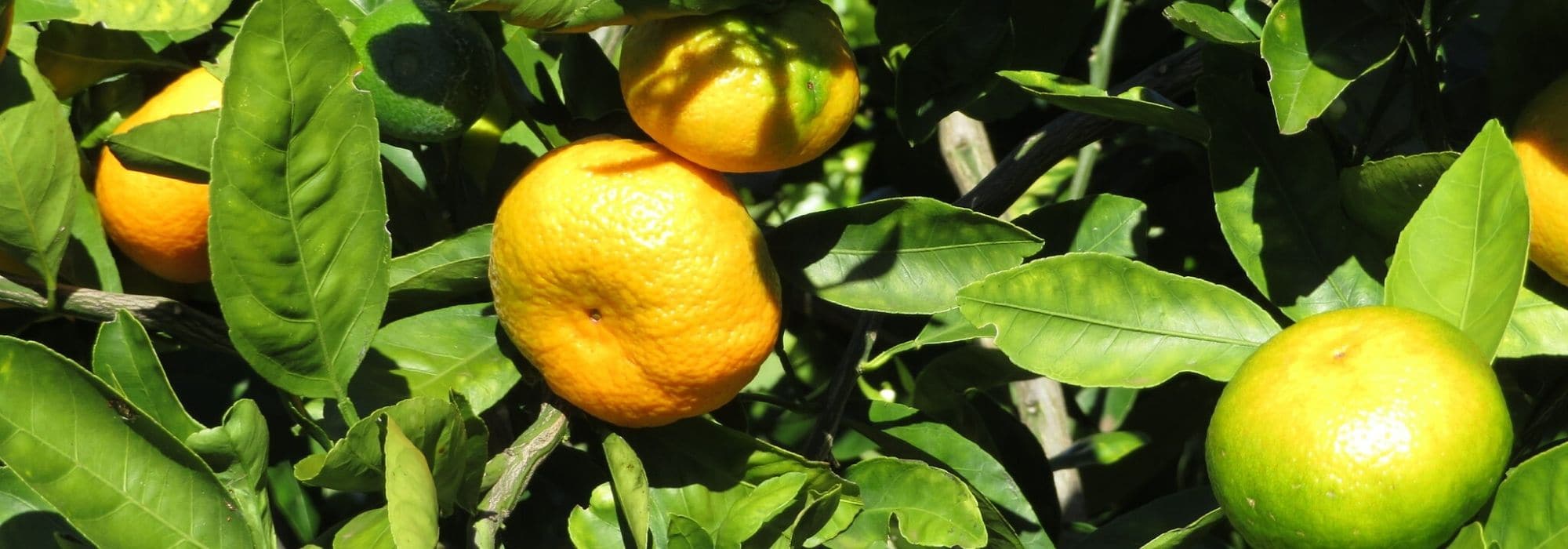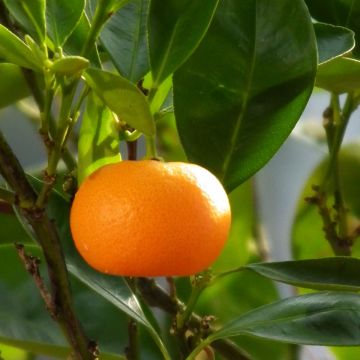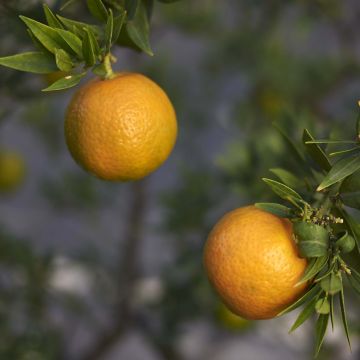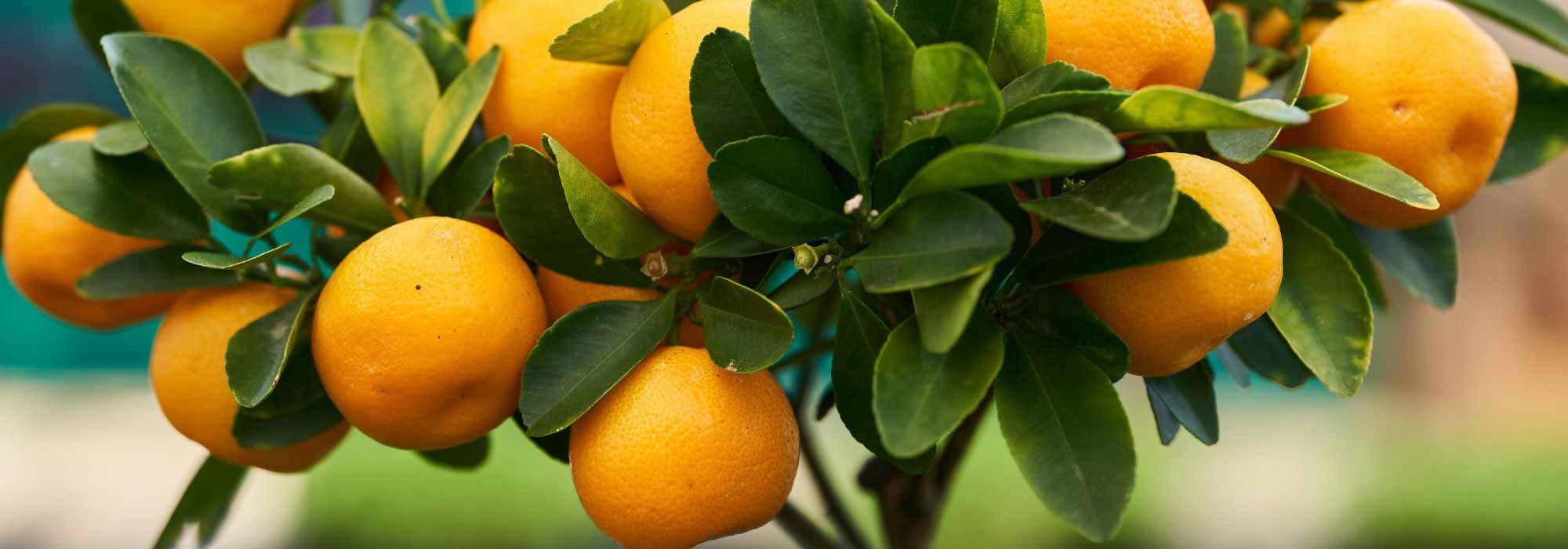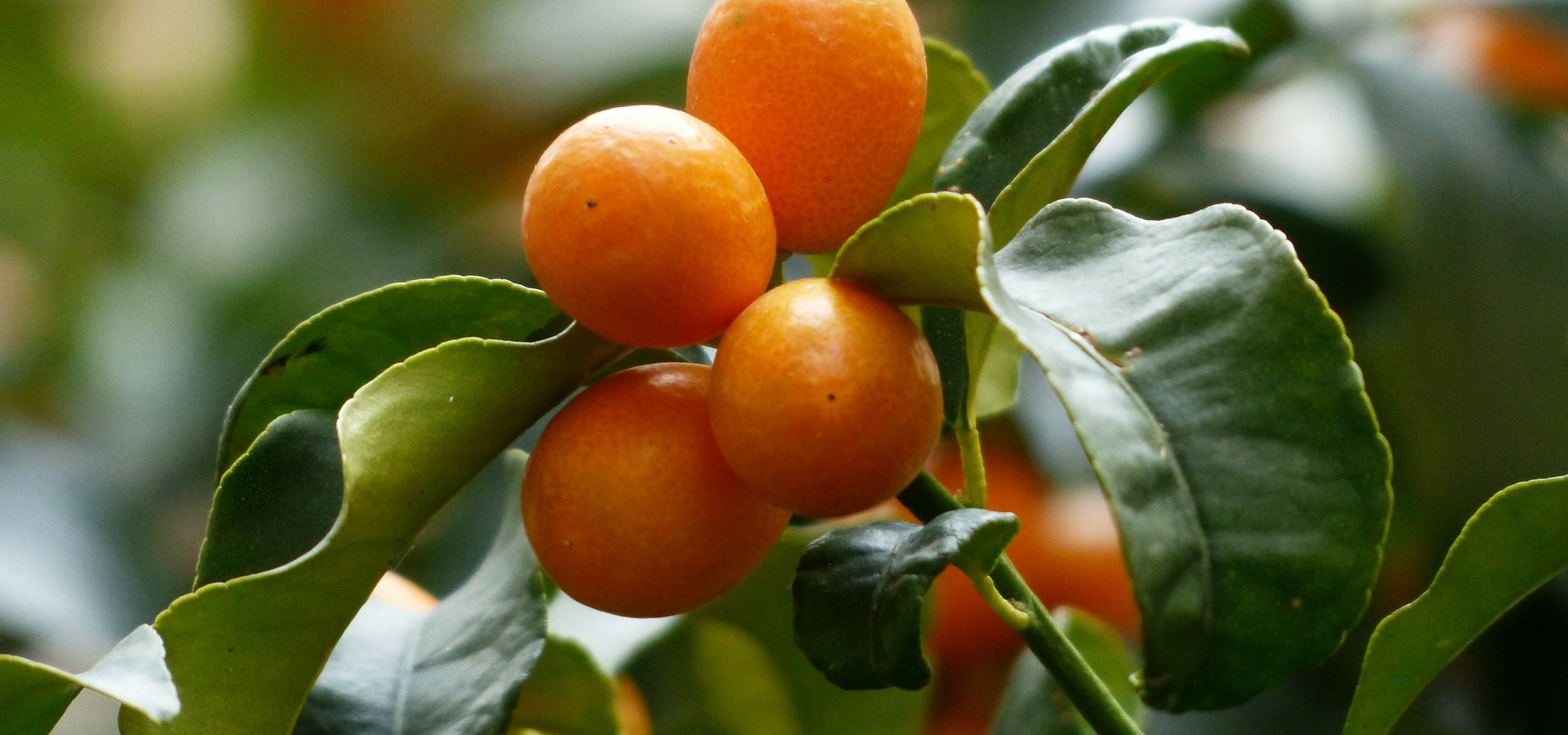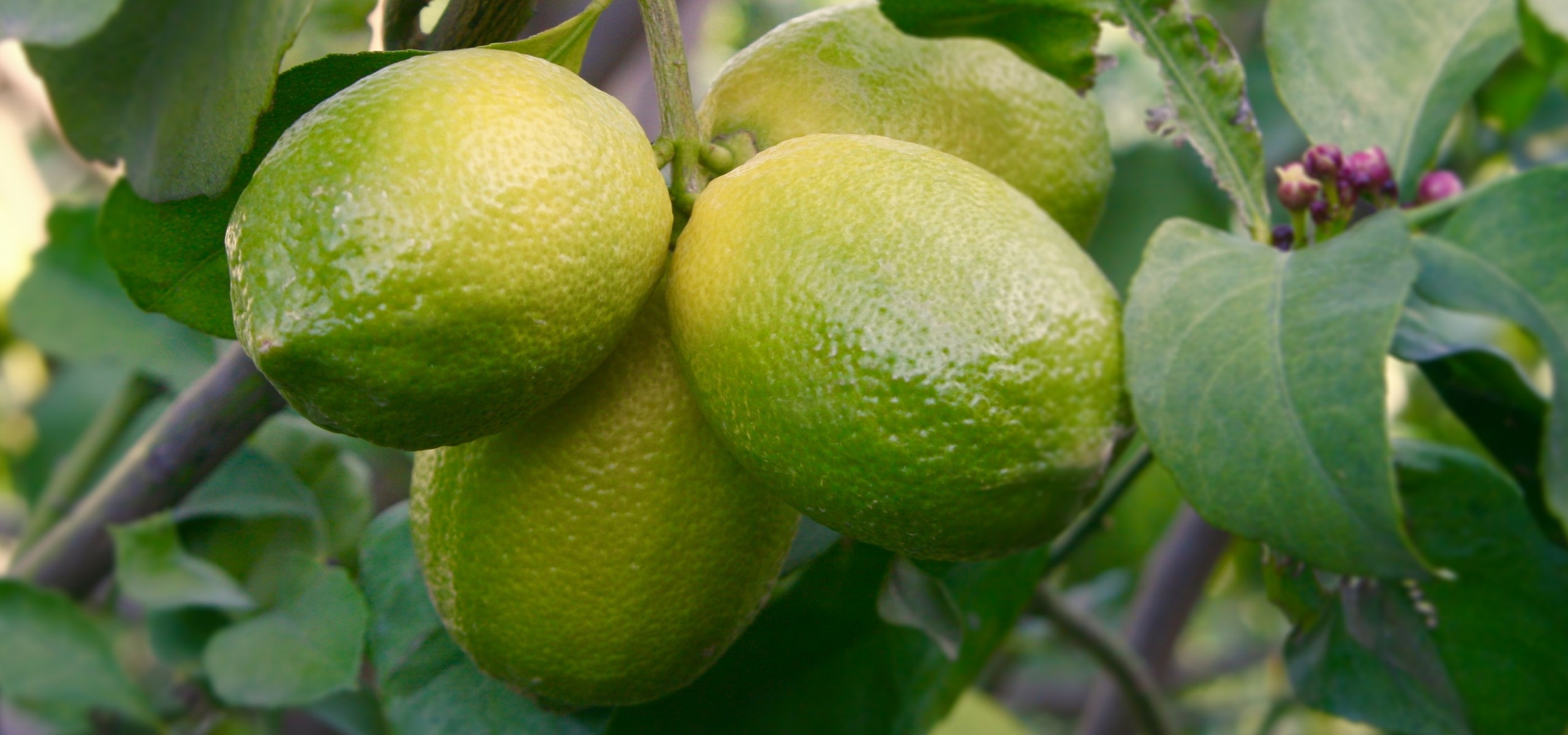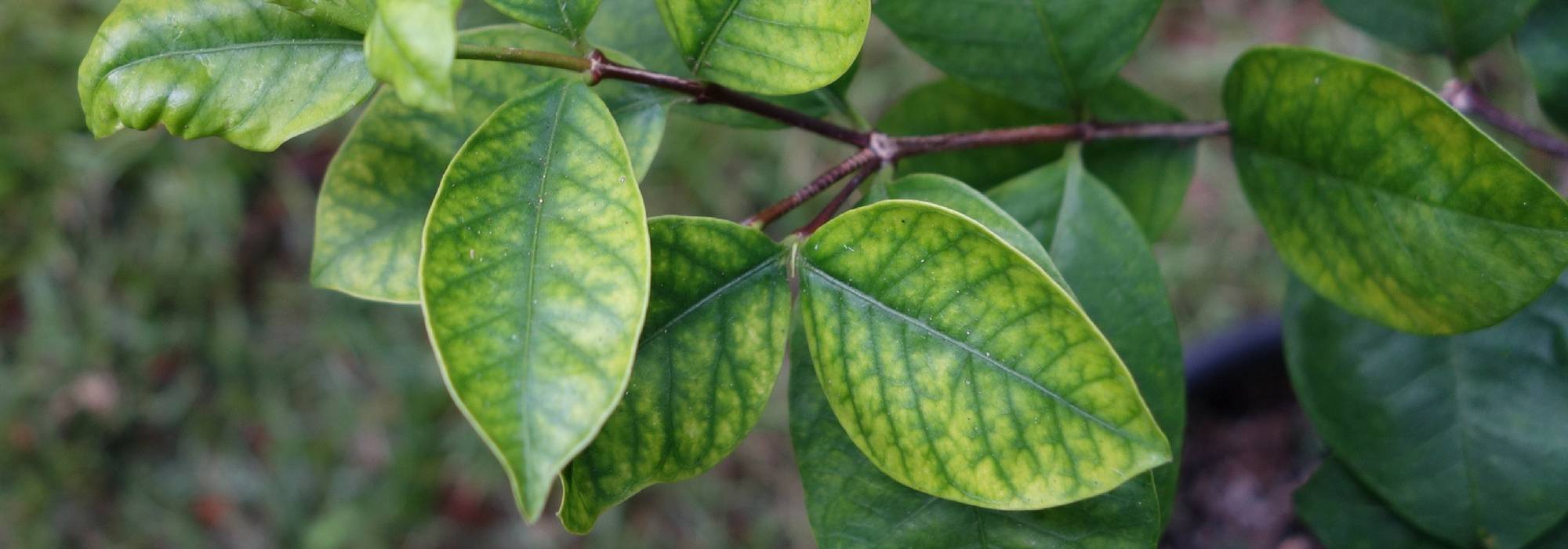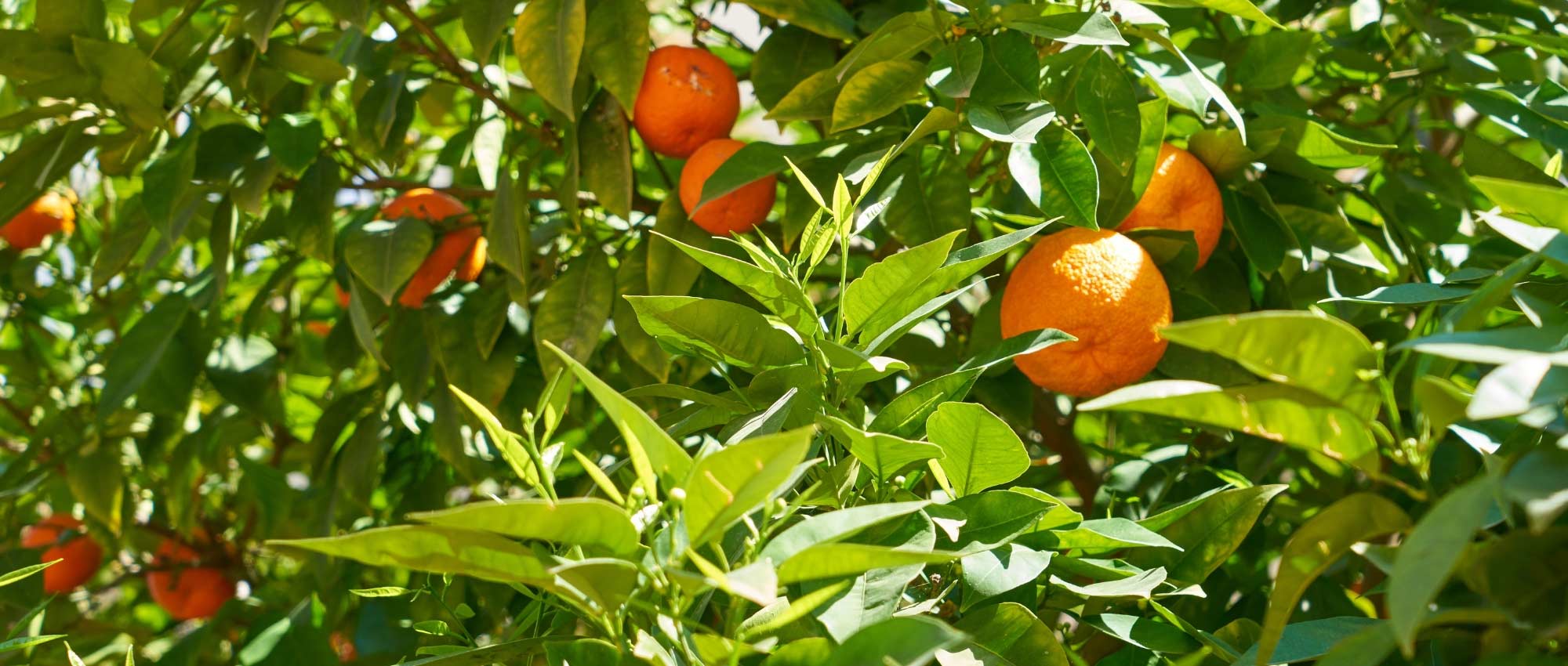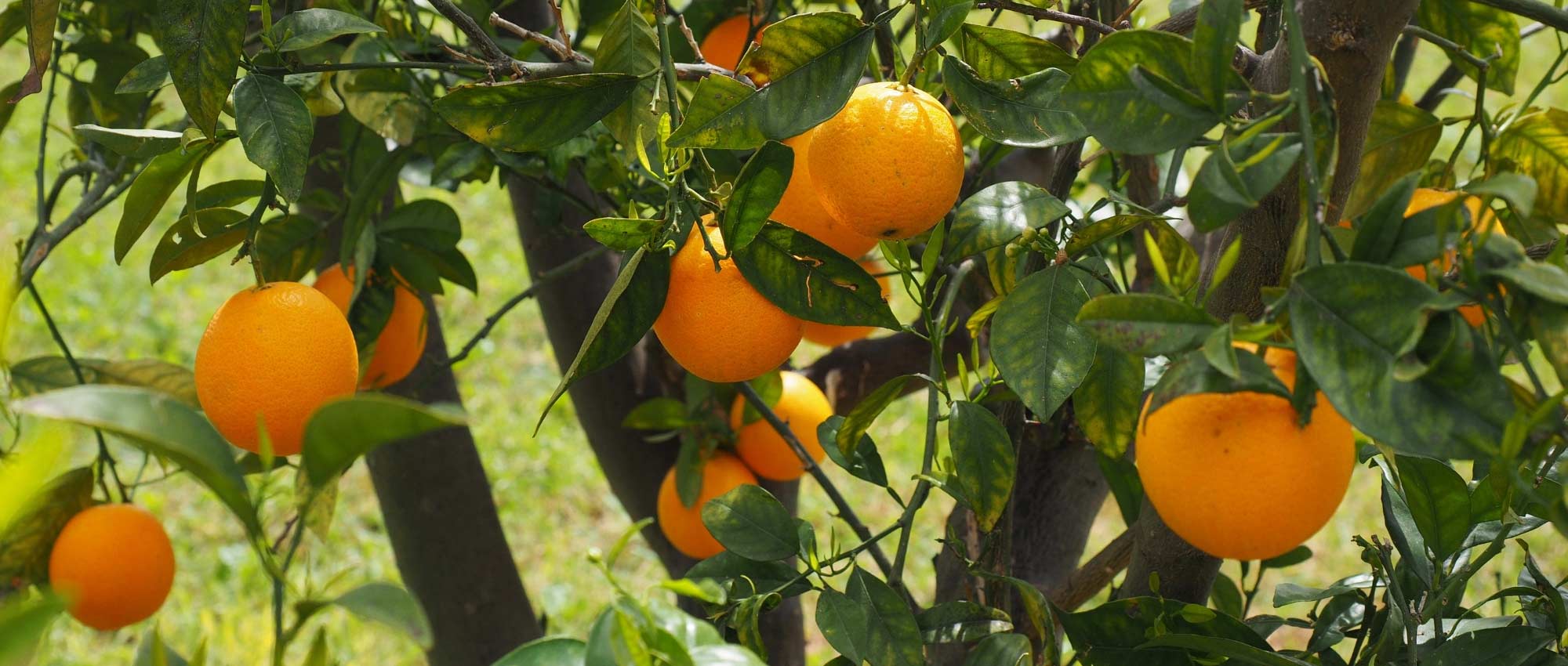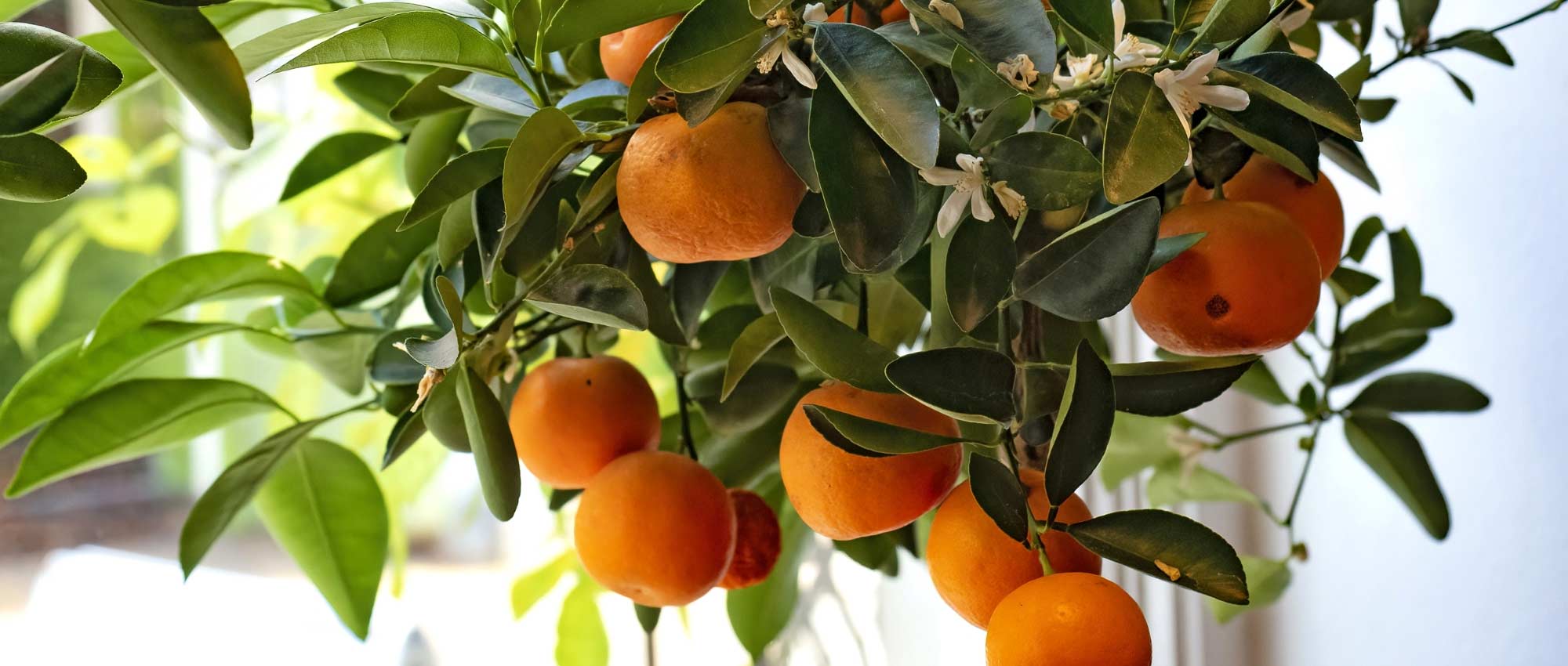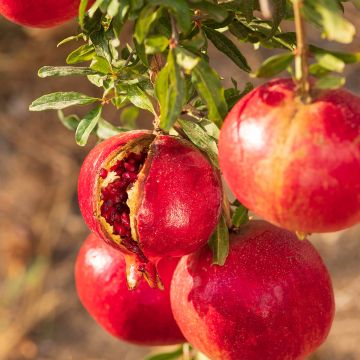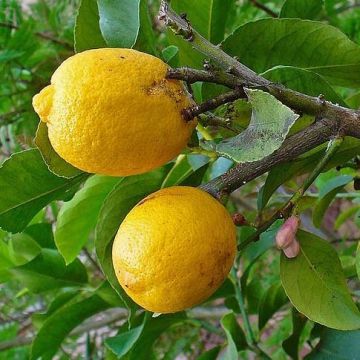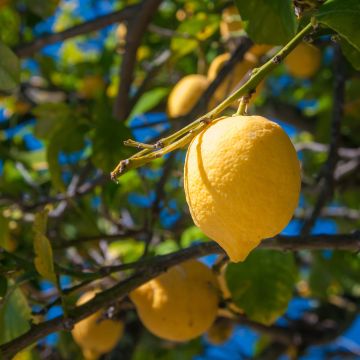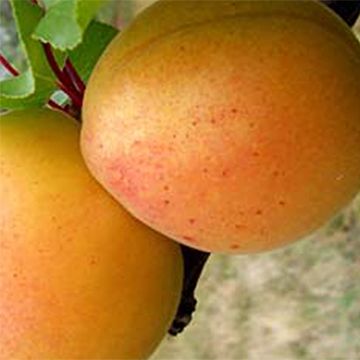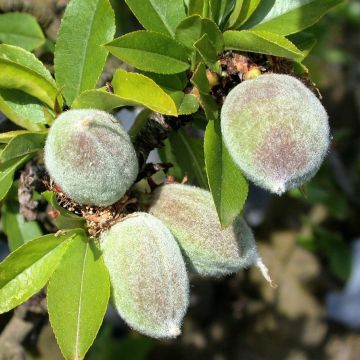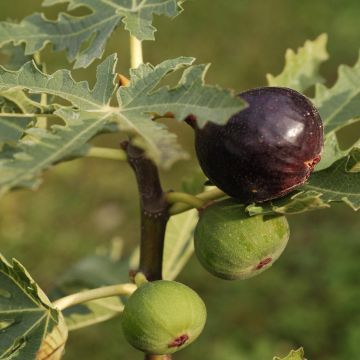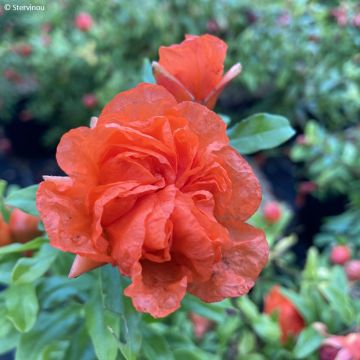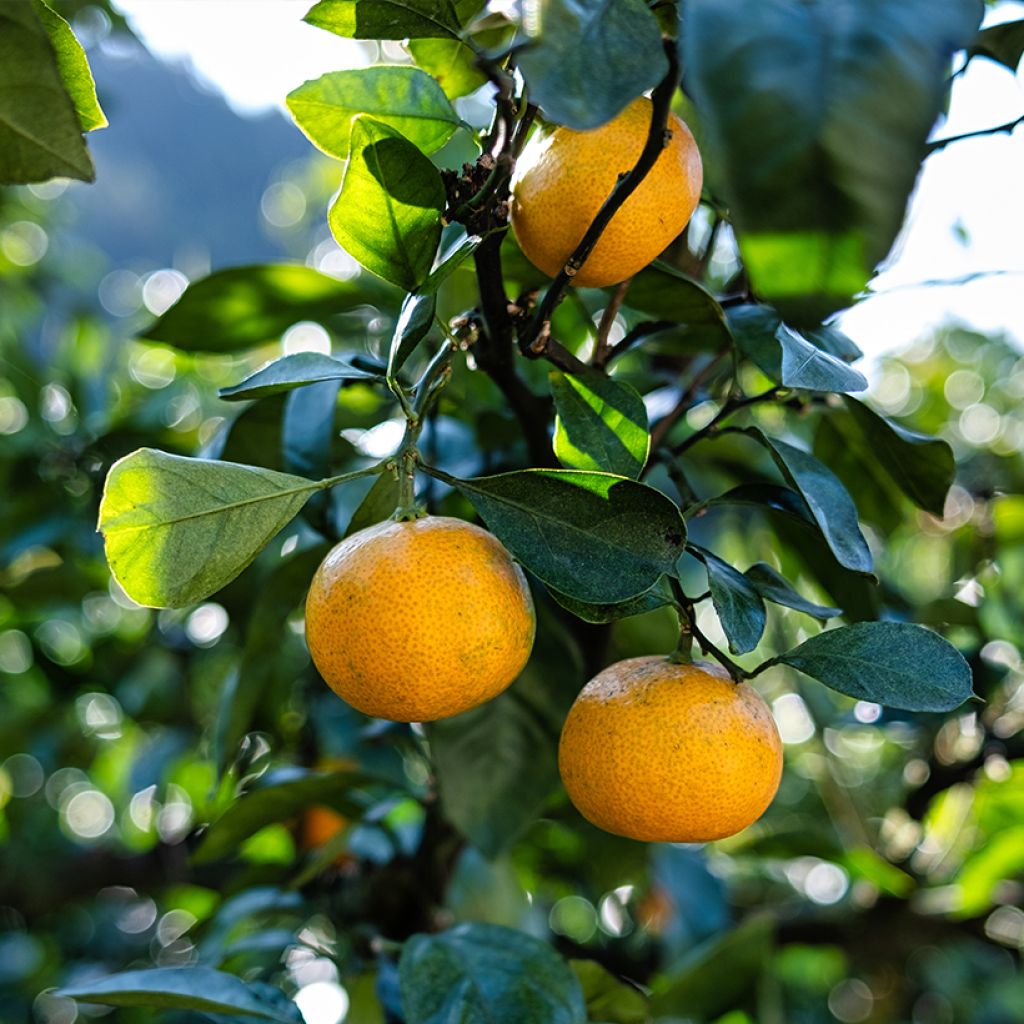

Satsuma Mandarin Tree - Citrus unshiu
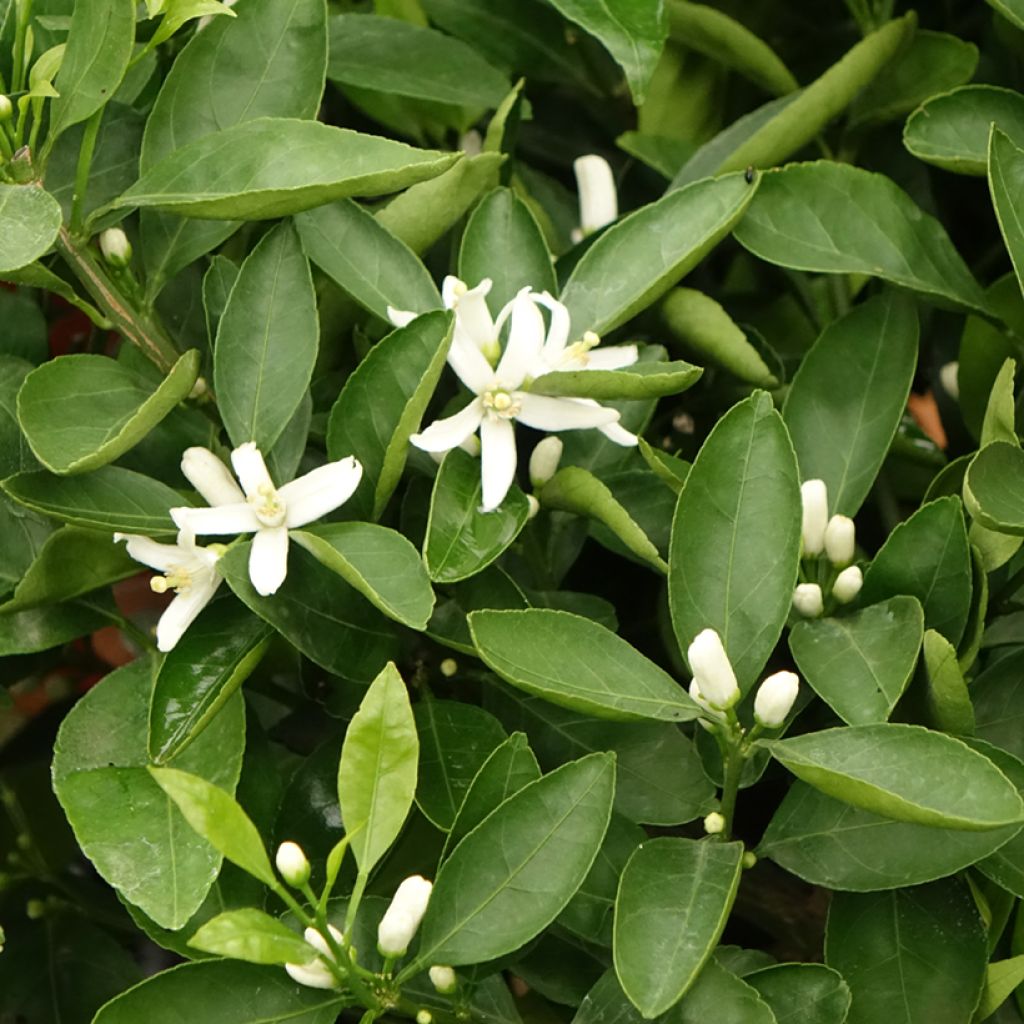

Satsuma Mandarin Tree - Citrus unshiu
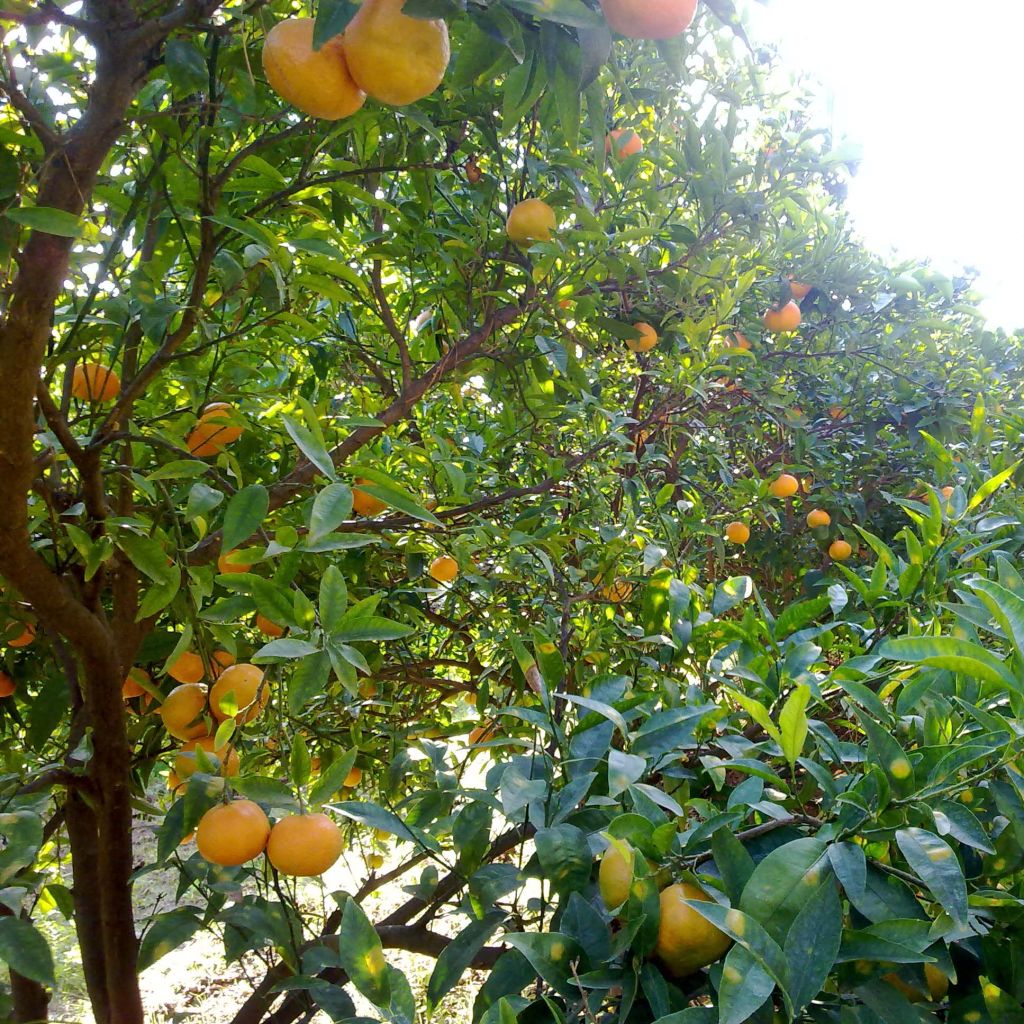

Satsuma Mandarin Tree - Citrus unshiu
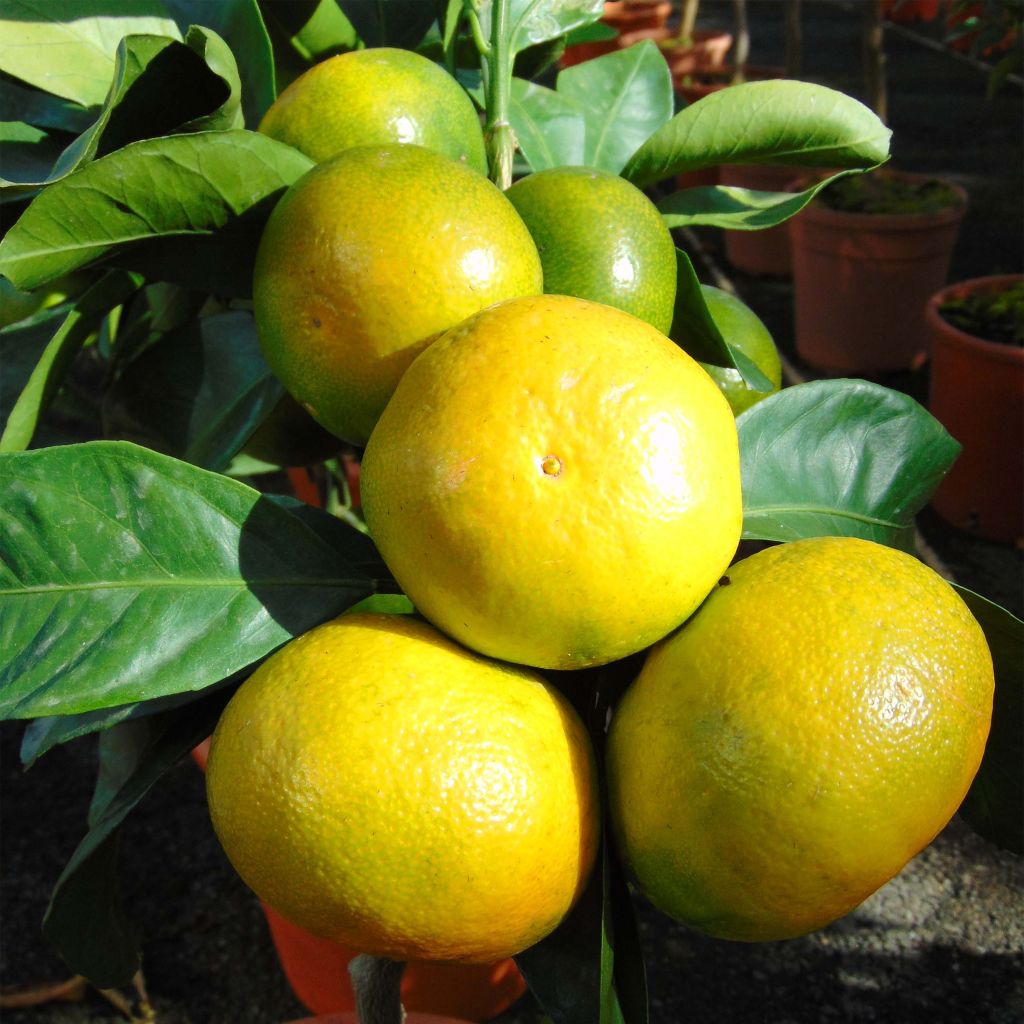

Satsuma Mandarin Tree - Citrus unshiu
Satsuma Mandarin Tree - Citrus unshiu
Citrus reticulata subsp. unshiu
Satsuma, Satsuma Mandarin, Satsuma Orange, Unshu Mikan, Cold Hardy Mandarin
Special offer!
Receive a €20 voucher for any order over €90 (excluding delivery costs, credit notes, and plastic-free options)!
1- Add your favorite plants to your cart.
2- Once you have reached €90, confirm your order (you can even choose the delivery date!).
3- As soon as your order is shipped, you will receive an email containing your voucher code, valid for 3 months (90 days).
Your voucher is unique and can only be used once, for any order with a minimum value of €20, excluding delivery costs.
Can be combined with other current offers, non-divisible and non-refundable.
Home or relay delivery (depending on size and destination)
Schedule delivery date,
and select date in basket
This plant carries a 6 months recovery warranty
More information
We guarantee the quality of our plants for a full growing cycle, and will replace at our expense any plant that fails to recover under normal climatic and planting conditions.
Description
The Satsuma Mandarin Tree, in Latin Citrus unshiu, is one of the hardiest citrus trees, a well-established bush resistant to temperatures as low as -8/10°C. This Japanese variety is also highly valued for its excellent productivity and the early ripeness of its fruits. Its small, juicy and tangy seedless mandarins can be consumed while still green, before the arrival of cold weather. This citrus tree also charms in spring with its abundant fragrant flowering, and in winter with its beautiful dark green foliage, complemented by a graceful, slightly trailing habit. It is well adapted to ground cultivation in regions with mild winters and does not require excessive heat to ripen its fruits. It can also be grown in a large pot on the terrace, being sheltered from frost during winter.This citrus tree is a vigorous shrub with an overall upright habit but slightly trailing, belonging to the Rutaceae family. It is a very ancient mutation of C. reticulata, which occurred in Japan in 1429. This small tree generally reaches a height of 2.50 m (8ft) and spreads over approximately 1.50 m (5ft), depending on the growing conditions. It produces numerous branches each year, slightly trailing at their tips. With an excellent yield, this mandarin tree is cultivated for its delicious fruits. It blooms abundantly in March-April. It produces clusters of small white flowers with a pleasant neroli fragrance. These give way to fairly large fruits, with an average diameter of 6 cm (2in), flattened at the poles. Their rather thin skin, initially green, then yellow, eventually turns orange and has a slightly rough appearance. Ripening occurs before the onset of the orange colouration, induced by the cold. The fruit pulp, orange, translucent and juicy, is generally seedless. The fruits are harvested from September to November. The evergreen and aromatic leaves of this citrus tree are narrower than those of other mandarin trees. They are entire, lanceolate, with crenate margins, and have a shiny dark green colour.
The fruits are part of the ancestral culinary traditions of Japan. They are used fresh, in cooking as a substitute for lemon when still green. It is also a beautiful ornamental shrub whose flowering is enchanting in spring. While relatively hardy for a citrus tree, it should be kept in mind that it will only thrive and bear fruit properly in a sheltered location. In Asia, the fruits are often consumed while still green, or slightly tinged with orange at the base. In Japan, the segments are preserved in a sugar syrup. When the satsumas are cut in half, the contrast between the bright orange pulp and the still green skin is a feast for the eyes. It is recommended to let the fruit ripen for at least one week, at 20°C, before consuming it: its flesh will become sweeter and more delicious. To determine if your mandarin is ripe, check that its concave base is soft, the skin is shiny with open pores, and the fruit feels heavy. An overripe fruit will have a swollen skin that no longer adheres to the segments. Satsuma mandarins are mainly consumed fresh, at any time of the day, or in vitamin-packed fruit cocktails.
Like all Citrus trees, the Satsuma Mandarin Tree contains in its leaves, flowers and fruits visible essential oil pouches, which are extracted by distillation (flowers and leaves) or by pressing (peel) to obtain essential oil with sedative properties, helping to combat stress and insomnia. The fragrance of the essential oil is described as sweet and floral, and is particularly pleasing to children.
Most citrus trees thrive in open ground in Mediterranean coastal regions, where they have the necessary warmth all year round. However, in order to bear fruit well, they must not lack water or nutrients. Relatively hardy, the Satsuma Mandarin Tree may lose its leaves at -7°C, but a well-established specimen will easily recover in spring, although fruiting for the year may be compromised. This hardiness is only valid when frosts are brief, the shrub is sheltered from cold winds, and temperatures rise significantly during the day. It is a self-fertile bush which means that a single individual is sufficient for complete pollination and fruiting.
Satsuma Mandarin Tree - Citrus unshiu in pictures
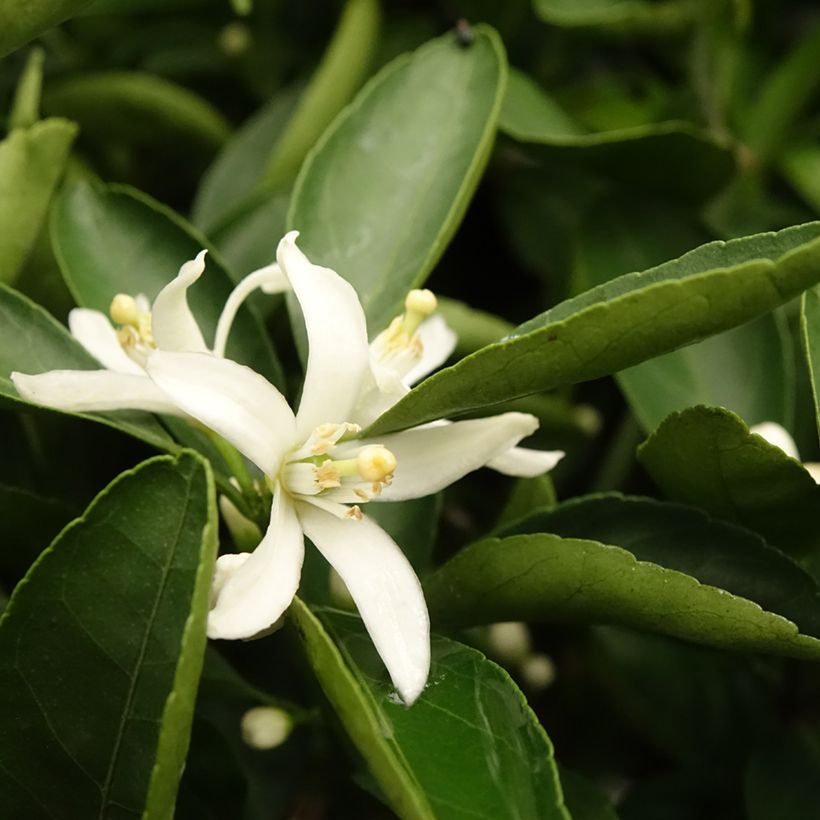

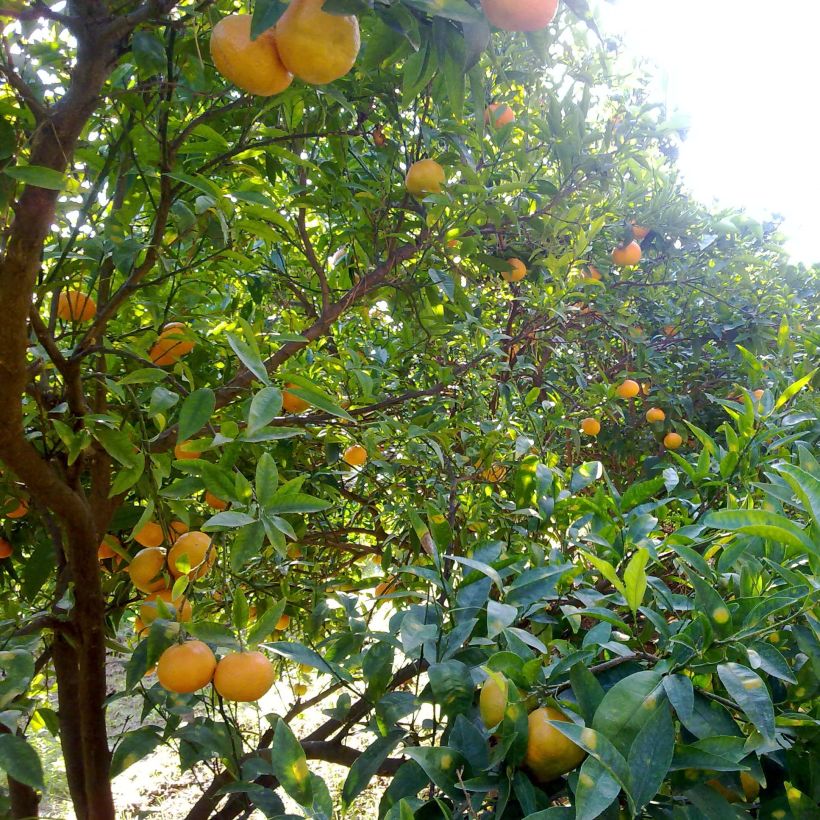

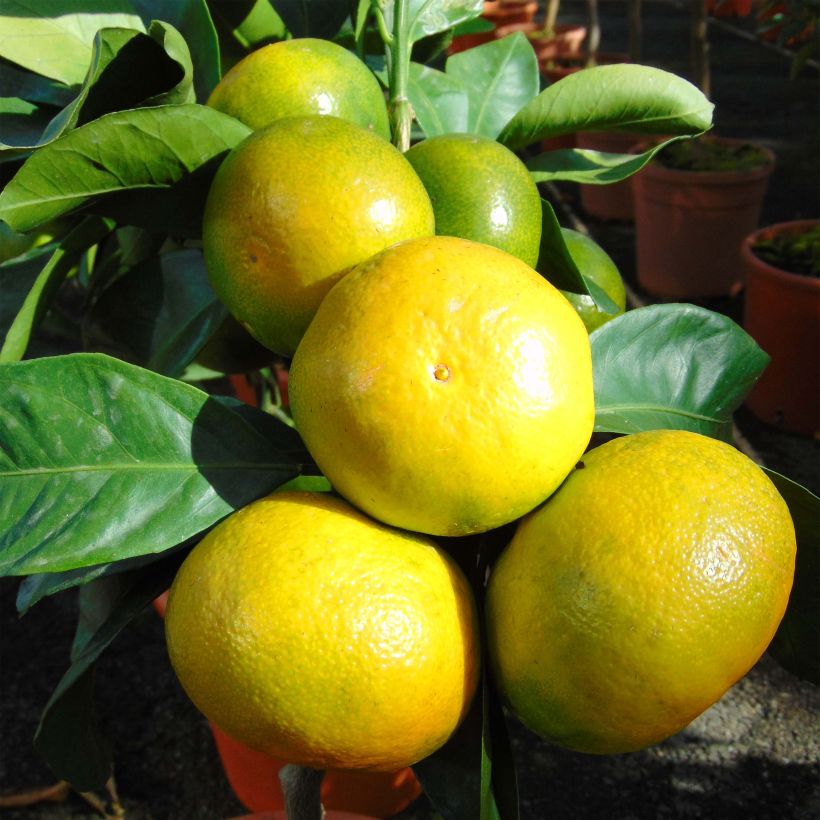

Plant habit
Fruit
Flowering
Foliage
Botanical data
Citrus
reticulata subsp. unshiu
Rutaceae
Satsuma, Satsuma Mandarin, Satsuma Orange, Unshu Mikan, Cold Hardy Mandarin
Southeast Asia
Other Mandarin trees
View all →Planting and care
Planting in open ground: the Satsuma Mandarin, like most citrus trees, prefers neutral, slightly acidic and low-limestone soils. It is reasonable to plant it in open ground only if you live in the olive tree zone or in the south of the Gulf of Gascony, but sheltered from the wind, where temperatures do not drop below -8°C (17.6°F) for short periods and rise significantly during the day. Citrus trees are heat and sun-loving bushes, even though they are less demanding in heat to ripen their fruits. The best time to plant is in early spring, in March and April. Be careful not to bury the collar. Citrus trees are naturally greedy and require water to fruit well: in any case, consider adding well-decomposed compost or "special citrus" fertiliser. Choose a sunny but not scorching location for your bush, sheltered from the wind to prevent the foliage from drying out and the young fruits from falling off. Place it in a location protected from sea spray.
Planting in a pot: in all other regions, the Satsuma Mandarin will be planted in a pot that you can keep in a greenhouse or a very lightly heated conservatory, but frost-free permanently, although it will appreciate being outside in summer. Planting in a pot or repotting takes place in late summer. Choose a pot slightly larger than the root system, as citrus trees do not like to feel cramped. Moisten the root ball well. To improve the drainage capacity of the mix, line the bottom of the pot with clay balls. Loosen the root ball and mix two-thirds garden soil with one-third "special citrus" compost. Water thoroughly. Prefer pots made of terracotta or breathable material.
Citrus trees need a lot of water to thrive. Your mandarin tree should be watered every day with slightly or non-limestone water, and the soil should remain moist at all times. Similarly, make sure to regularly provide it with the fertiliser it needs: every 6 months for slow-release granular fertiliser, or every 3 waterings for liquid fertiliser.
Planting period
Intended location
Care
Planting & care advice
-
, onOrder confirmed
Reply from on Promesse de fleurs
Similar products
Haven't found what you were looking for?
Hardiness is the lowest winter temperature a plant can endure without suffering serious damage or even dying. However, hardiness is affected by location (a sheltered area, such as a patio), protection (winter cover) and soil type (hardiness is improved by well-drained soil).

Photo Sharing Terms & Conditions
In order to encourage gardeners to interact and share their experiences, Promesse de fleurs offers various media enabling content to be uploaded onto its Site - in particular via the ‘Photo sharing’ module.
The User agrees to refrain from:
- Posting any content that is illegal, prejudicial, insulting, racist, inciteful to hatred, revisionist, contrary to public decency, that infringes on privacy or on the privacy rights of third parties, in particular the publicity rights of persons and goods, intellectual property rights, or the right to privacy.
- Submitting content on behalf of a third party;
- Impersonate the identity of a third party and/or publish any personal information about a third party;
In general, the User undertakes to refrain from any unethical behaviour.
All Content (in particular text, comments, files, images, photos, videos, creative works, etc.), which may be subject to property or intellectual property rights, image or other private rights, shall remain the property of the User, subject to the limited rights granted by the terms of the licence granted by Promesse de fleurs as stated below. Users are at liberty to publish or not to publish such Content on the Site, notably via the ‘Photo Sharing’ facility, and accept that this Content shall be made public and freely accessible, notably on the Internet.
Users further acknowledge, undertake to have ,and guarantee that they hold all necessary rights and permissions to publish such material on the Site, in particular with regard to the legislation in force pertaining to any privacy, property, intellectual property, image, or contractual rights, or rights of any other nature. By publishing such Content on the Site, Users acknowledge accepting full liability as publishers of the Content within the meaning of the law, and grant Promesse de fleurs, free of charge, an inclusive, worldwide licence for the said Content for the entire duration of its publication, including all reproduction, representation, up/downloading, displaying, performing, transmission, and storage rights.
Users also grant permission for their name to be linked to the Content and accept that this link may not always be made available.
By engaging in posting material, Users consent to their Content becoming automatically accessible on the Internet, in particular on other sites and/or blogs and/or web pages of the Promesse de fleurs site, including in particular social pages and the Promesse de fleurs catalogue.
Users may secure the removal of entrusted content free of charge by issuing a simple request via our contact form.
The flowering period indicated on our website applies to countries and regions located in USDA zone 8 (France, the United Kingdom, Ireland, the Netherlands, etc.)
It will vary according to where you live:
- In zones 9 to 10 (Italy, Spain, Greece, etc.), flowering will occur about 2 to 4 weeks earlier.
- In zones 6 to 7 (Germany, Poland, Slovenia, and lower mountainous regions), flowering will be delayed by 2 to 3 weeks.
- In zone 5 (Central Europe, Scandinavia), blooming will be delayed by 3 to 5 weeks.
In temperate climates, pruning of spring-flowering shrubs (forsythia, spireas, etc.) should be done just after flowering.
Pruning of summer-flowering shrubs (Indian Lilac, Perovskia, etc.) can be done in winter or spring.
In cold regions as well as with frost-sensitive plants, avoid pruning too early when severe frosts may still occur.
The planting period indicated on our website applies to countries and regions located in USDA zone 8 (France, United Kingdom, Ireland, Netherlands).
It will vary according to where you live:
- In Mediterranean zones (Marseille, Madrid, Milan, etc.), autumn and winter are the best planting periods.
- In continental zones (Strasbourg, Munich, Vienna, etc.), delay planting by 2 to 3 weeks in spring and bring it forward by 2 to 4 weeks in autumn.
- In mountainous regions (the Alps, Pyrenees, Carpathians, etc.), it is best to plant in late spring (May-June) or late summer (August-September).
The harvesting period indicated on our website applies to countries and regions in USDA zone 8 (France, England, Ireland, the Netherlands).
In colder areas (Scandinavia, Poland, Austria...) fruit and vegetable harvests are likely to be delayed by 3-4 weeks.
In warmer areas (Italy, Spain, Greece, etc.), harvesting will probably take place earlier, depending on weather conditions.
The sowing periods indicated on our website apply to countries and regions within USDA Zone 8 (France, UK, Ireland, Netherlands).
In colder areas (Scandinavia, Poland, Austria...), delay any outdoor sowing by 3-4 weeks, or sow under glass.
In warmer climes (Italy, Spain, Greece, etc.), bring outdoor sowing forward by a few weeks.






























